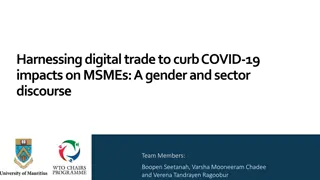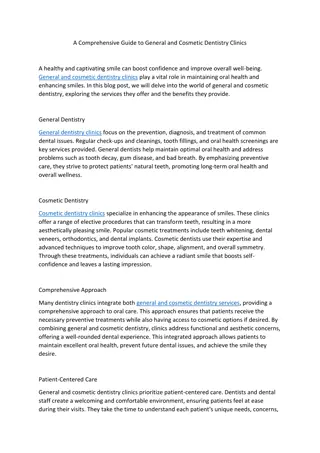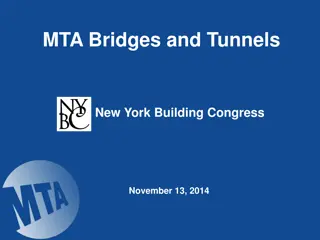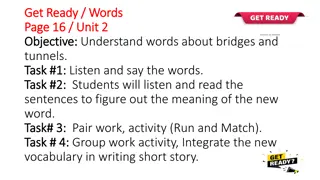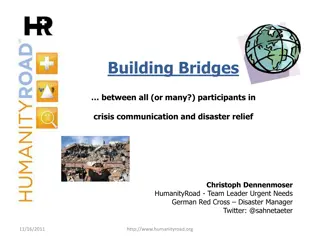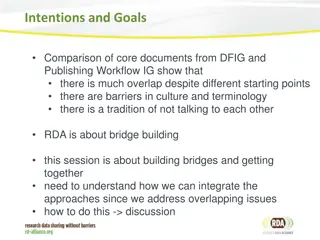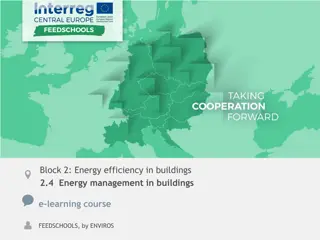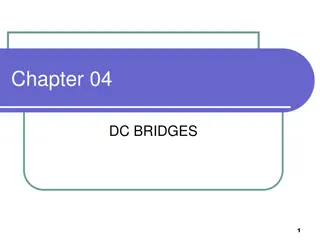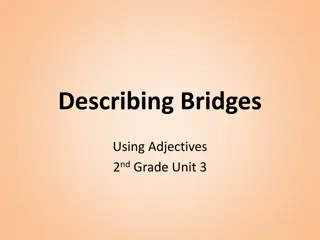Building Bridges Between Schools and Industry: The Mauritian Experience
The Mauritian education system, modeled after the British system, provides free schooling up to post-secondary level. The Higher School Certificate (HSC) is highly competitive and prepares students for university. After HSC, students have various pathways including academic and vocational routes. The labor force in Mauritius faces challenges, with a noticeable unemployment rate among youth. Efforts are being made to bridge the gap between education and industry to enhance employment opportunities.
- Mauritian Education
- School-Industry Collaboration
- Higher School Certificate
- Youth Unemployment
- Vocational Education
Download Presentation

Please find below an Image/Link to download the presentation.
The content on the website is provided AS IS for your information and personal use only. It may not be sold, licensed, or shared on other websites without obtaining consent from the author. Download presentation by click this link. If you encounter any issues during the download, it is possible that the publisher has removed the file from their server.
E N D
Presentation Transcript
Building bridges between Building bridges between schools and industry: schools and industry: The Mauritian Experience The Mauritian Experience London Conference on Employer Engagement in Education and Training 2016 Dr Shalena Fokeera-Wahedally 21 July 2016
Population ~ 1, 332 000 Former French and British Colony Students population at secondary level 115 000 Independent since 1968 Students population at 16+ level - ~ 22500 Republic since 1992 The labour force for year 2015 was estimated at 584,600 and employment at 538,300 Member of the Commonwealth The estimated number of unemployed for 2015 was 46,300. The unemployment rate worked out to 7.9%.
Most of the workers (79%) were employees. Among the unemployed, women outnumbered men (26,800 compared to 19,500) though they were generally more qualified. Unemployment rate was highest at the lowest age groups and decreased progressively with increasing age. Youth (aged 16 to 24 years) unemployment rate stood at 26.3% (21.6% for male and 32.7% for female).
Mauritian Education System Primary exams- CPE Pass = secondary Failure = vocational Modelled after the British education system 2 years preprimary 6 years primary 7 years secondary Post secondary education Free schooling Free transport Free textbooks at primary 3 years lower secondary 2 years leading to the School Certificate- O level - University of Cambridge 2 years leading to HSC A levels - Cambridge HSC
Higher School Certificate - HSC Exists for more than 50 years Highly competitive National laureate/ scholarship scheme Highly academic Recognised worldwide Prepares students for the University
End of Secondary Cycle Education 11 000 16 000 SC Higher School Certificate (HSC) 2 500 compete Out of 8500 + (1500) HSC Professional (HSC Pro) Workplace-based component 1500 successful candidates drop out School-based component
What do our students do after their HSC? After HSC (an initial population of 11000) 8 800 students are successful 2200 4000 students go for higher studies unsuccessful students might go for employment 4800 students go for employment
Employers Students
Mahmood Cheeroo, former secretary of the Chamber of Commerce and Industry: We need young people who can adapt to the system. There must be a wider choice of subjects and more 'soft skills'. We need to review our entire educational system.
Roland Dubois, ex-president of YEP Another issue is the problem of mismatch of qualifications . The other problem that we have is not just a qualification mismatch but also lack of skills. ..Also, companies look for people who have experience and a youth who has just graduated from university does not have the necessary working experience. Another issue is lack of employability skills. Youth have just been taught to concentrate on their field of studies, however they are not aware of the labour market, they lack communication and CV writing skills, and they do not even know how to convince and negotiate with people.
HSC Pro - Development Introduced in 2007 Consultations with Universit Laval & Sherbrooke University in Quebec & with Cambridge in the UK Focus group with stakeholders: Employers Educators Policy makers Students Cambridge involved in developing the curriculum content of the HSC Pro Acceptance of HSC Pro as an suitable model by the Mauritian Education System Introduced on a pilot basis in 2015
ICT Sector in Mauritius ICT sector - Mauritius GDP at 6.8%, 3rd economic pillar of the island. Value added Rs bn 19.4 in 2012 (compared to Rs bn 6 in 2002) Growth Rate 9.5 per cent in 2012
Aims & Objectives of the HSC Pro Aims: Objectives: Completion & Pass rates 1 Alternative Pathway 1 Lifelong learning & Employability skills 2 Mismatch bet. Academic & Work skills 2 Fit for purpose 3 3 Economy
Guiding Principles HSC Pro at par with the traditional HSC Recognition of the qualification by universities and employers Provide the opportunity for Higher Studies Provide opportunities to experience relevant work placement Be directly employable Develop critical and analytical skills through the syllabuses offered
Structure of the HSC Pro The HSC Pro Curriculum comprises three main components Main Subjects Work Placement Subsidiary Subjects Global Perspectives (mandatory) 2 or 3 Mandatory A-level courses & including 1 or 2 Cambridge Technical IT AS-Level subjects
Benefits to the student Acquisition of employability skills Chance of immediate employment Flexibility in assessment Potential for upgrading qualification Possibility for sponsorship for HE
Benefits to employers Provide opportunities for involvement in the education and development of their future workforce Enable potential recruitment of new employers who can be immediately productive
Boys 2 Girls 3 Mixed - 6 SSS 3 National - 1 BEC - 2 MGI - 2 Private - 3 HSC Pro Pilot Schools HSC Pro Pilot Schools Le Chou College Goodlands SSS (B) Universal College (B&G) Manilall Doctor SSS (G) Rabindranath Tagore SS (B & G) St Mary s West College (B &G) New Educational College (B&G) Belle Rose SSS (G) MGSS Solferino (B & G) S Bissoondoyal SS (B) Loreto College Mahebourg (G) KeatsCollege (B&G)
What has been done for the piloting? Expression of interest from schools, educators and students Consultation with employers in: The development of the syllabuses The work placement component 12 pilot schools
What has been done for the piloting? Training of educators Briefing of Heads of schools Recruitment of companies Training of workplace supervisors MoU with employers Insurance cover to students Transport cover Upgrade of schools infrastructure
Period for the Work Placement Period for the Work Placement DURATION OF DURATION OF PLACEMENT PLACEMENT 1-2 weeks PERIOD PERIOD April Holidays 2-3 weeks August Holidays YEAR 1 YEAR 1 5 weeks Oct- Dec Holidays Last week of October to first week of December 2 weeks April Holidays 2-3 weeks August Holidays YEAR 2 YEAR 2 Oct- Dec Holidays No Placement
Work placement component During school holidays Meeting and link established between the educators and the workplace supervisors Link to their syllabuses
What we have observed? Students have opted for the HSC: Potential to get real work experience Greater possibility to secure a job Less final exam pressure No other option otherwise would drop out from school or repeat the class
Why do students opt for the HSC Pro? 70 60 50 40 30 20 10 0 work experience employability skills useful for higher edu learnt IT self learning
What we have observed? 45 40 Students who have opted for the HSC Pro: Come from economically deprived households: Manual worker Skilled worker Semi professional Professional 35 30 25 20 15 10 5 0 Professional Semi professional Skilled Semi skilled Manual worker not indicated
What we have observed? Schools with a 5 star reputation have been less diligent and committed Schools with strong leadership and management and committed and dedicated educators are coming out of the lot
Students feedback on the course 35 Students are acquiring important skills such as: Self- learning Responsibility Employability skills Committed teachers learning a whole new approach to teaching and assessment 30 25 20 15 10 5 0 very interesting very interesting but difficult satisfactory bulky but interesting bulky difficult boring/bad/ unsatisfied interesting interesting but difficult
Linkbynet Joe a t pendant toute la dur e de son stage, un collaborateur tr s s rieux et appliqu avec un comportement exemplaire. Il a su accomplir toutes les missions qu on lui a attribu es avec brio et ce stage, j sp re que ca va l aider et le motiver a avancer dans ses tudes et sa carri re professionelle. Il a beaucoup de potentiel pour y arriver.
Mauritius Telecom Has been very participative in discussion with staff and shown good enthusiasm to learn more. Was very proactive on customer interaction.
Nesco Ltd She is a very attentive girl, obedient, shows interest in learning new skills., well groomed, good team player, improving her adaptability to work under pressure.
Data Communications Ltd Good team player with lots of potential; Could gain from being a bit more strict with himself; Did his best but stops were he could do more; Very good at handling tasks given with no effort.
BPML Lakshana has been clever and confident during the placement. She has good analytical skills and was persistent in completing her tasks. She also raised several points that can add value to the information systems at BPML. Lakshana is well mannered and has been appreciated by the staff.
Main challenges Not respecting deadlines for the submission of work Lack of commitment and support from certain heads of schools and teachers Qualification perceived as being for less academically able students Absenteeism Lack of commitment of certain employers Maintaining link between schools and employers
Way forward Review of pilot schools Bringing in a scholarship scheme Review of the work placement periods Consolidating the team at the MES Introduction of new strand in the HSC Pro More training and support
Thank you Thank you






